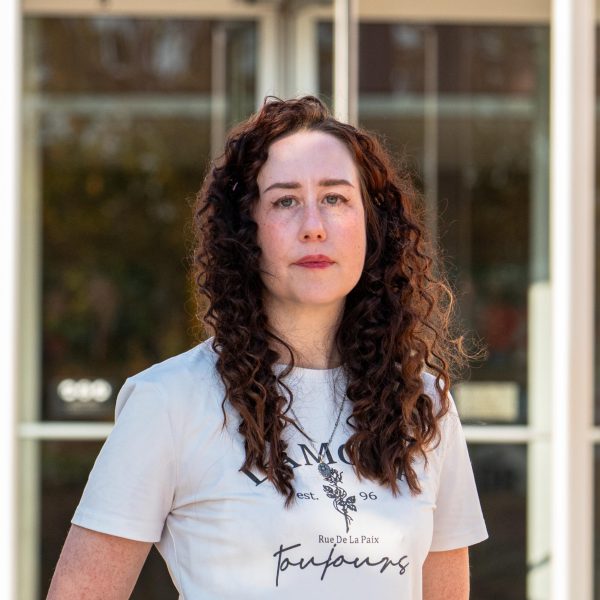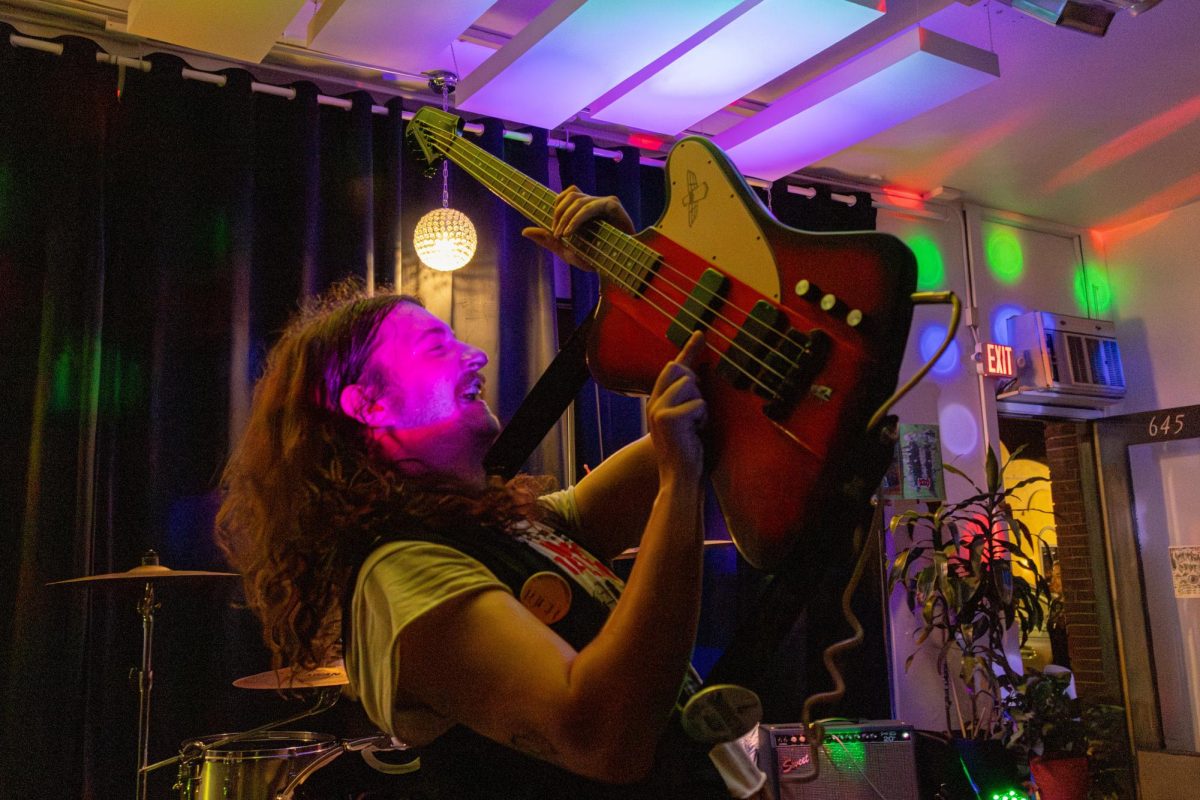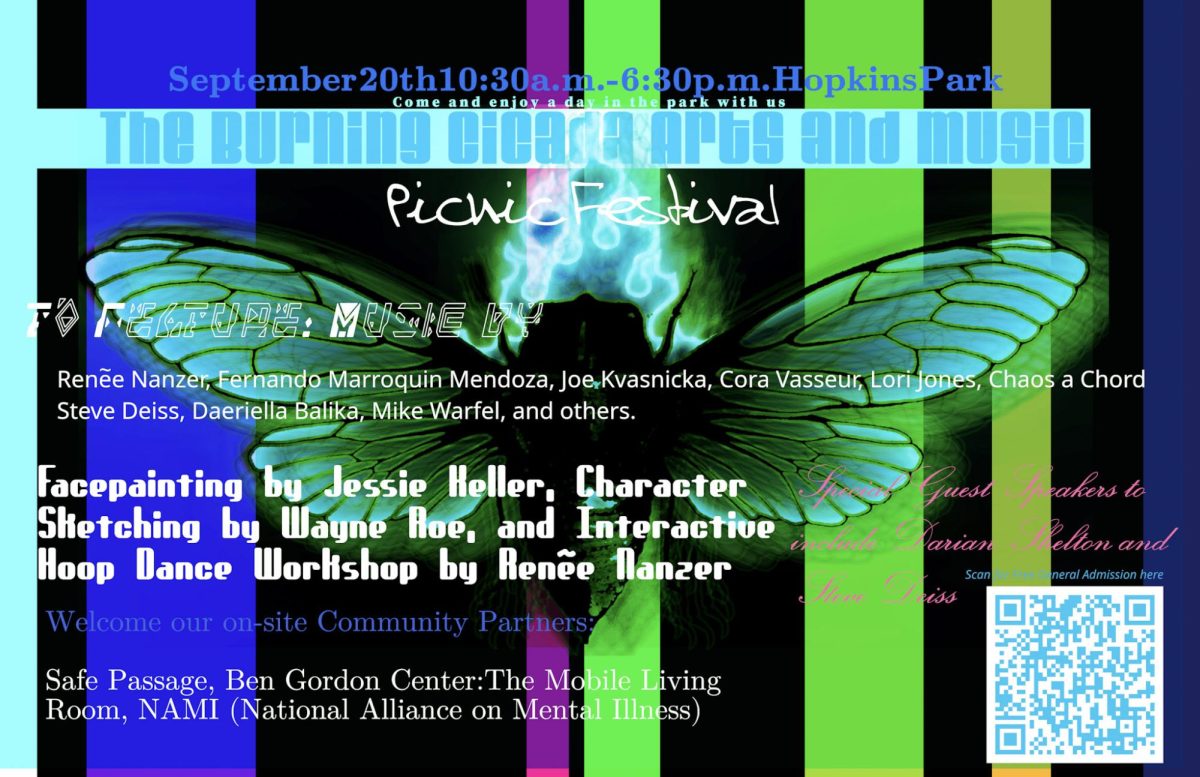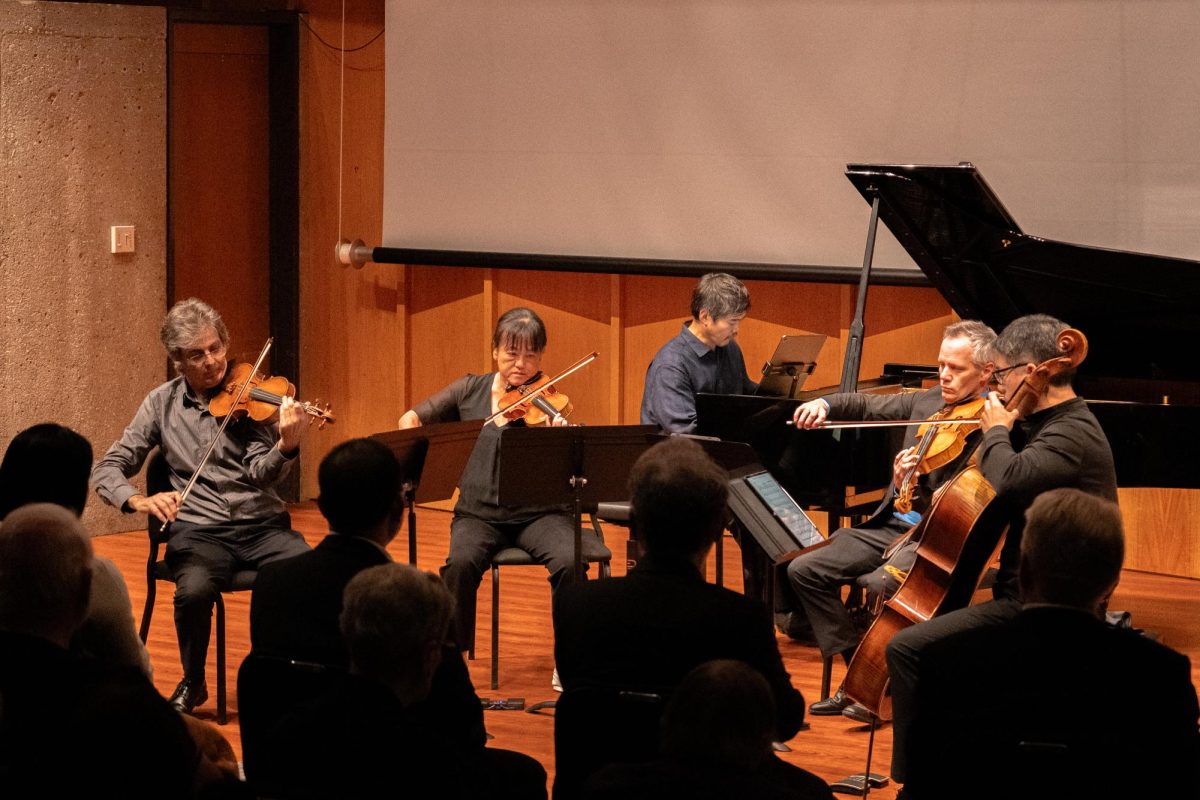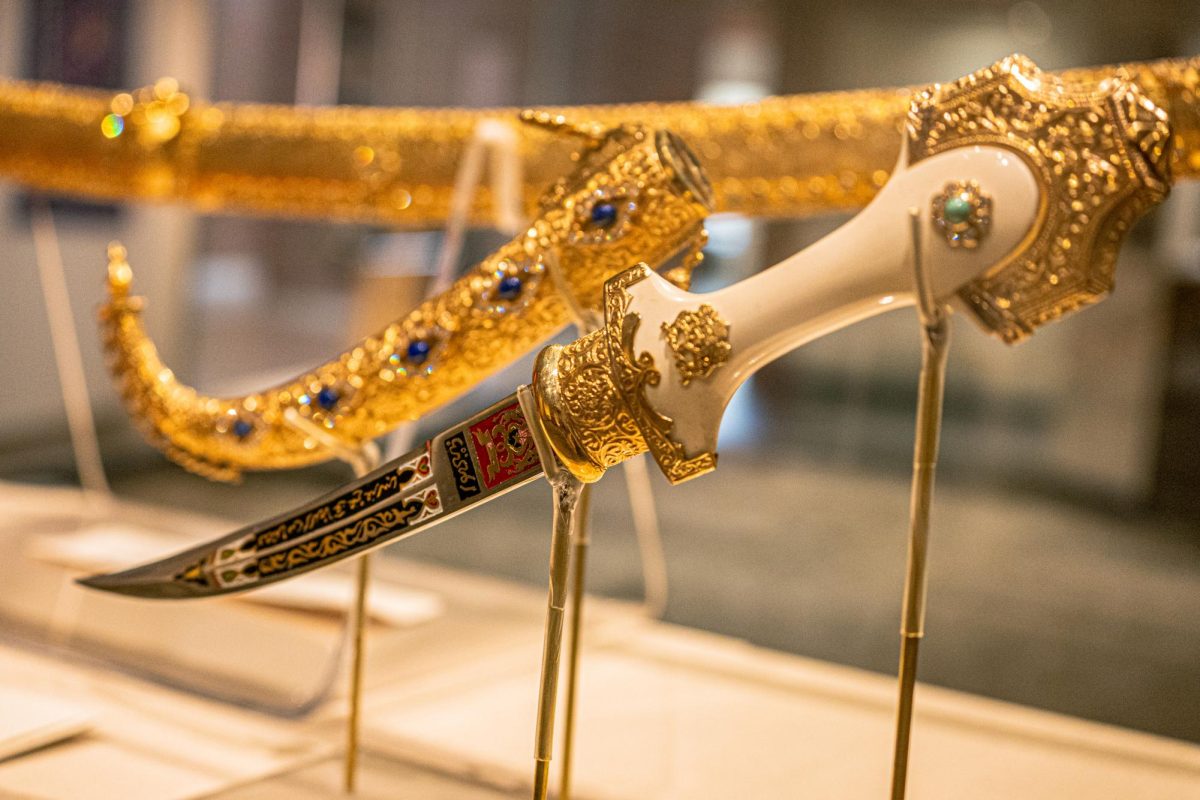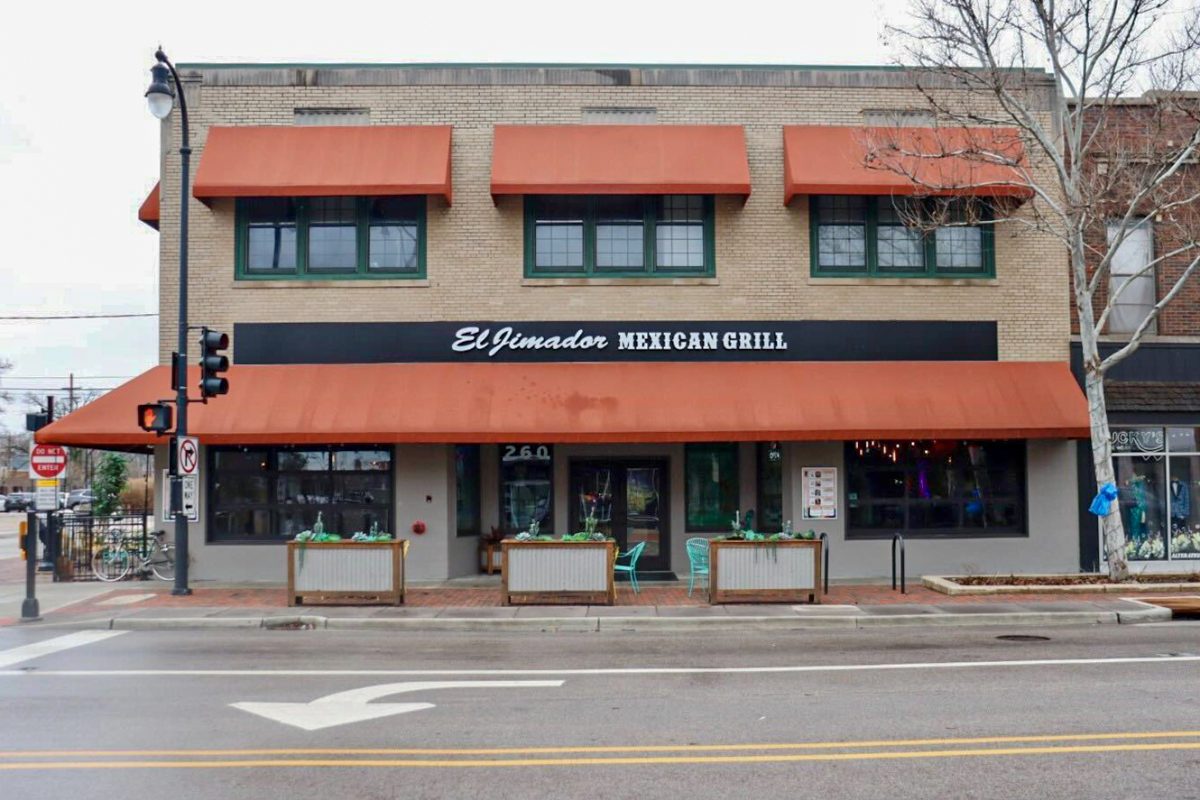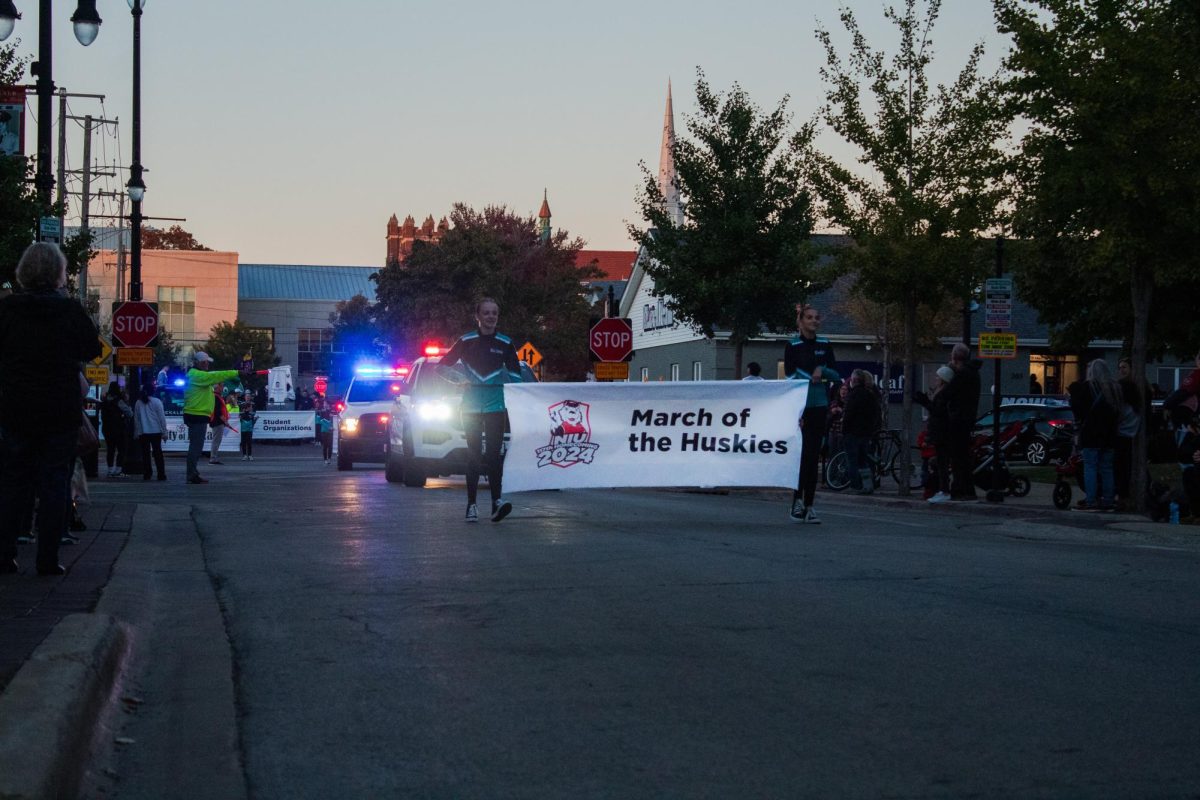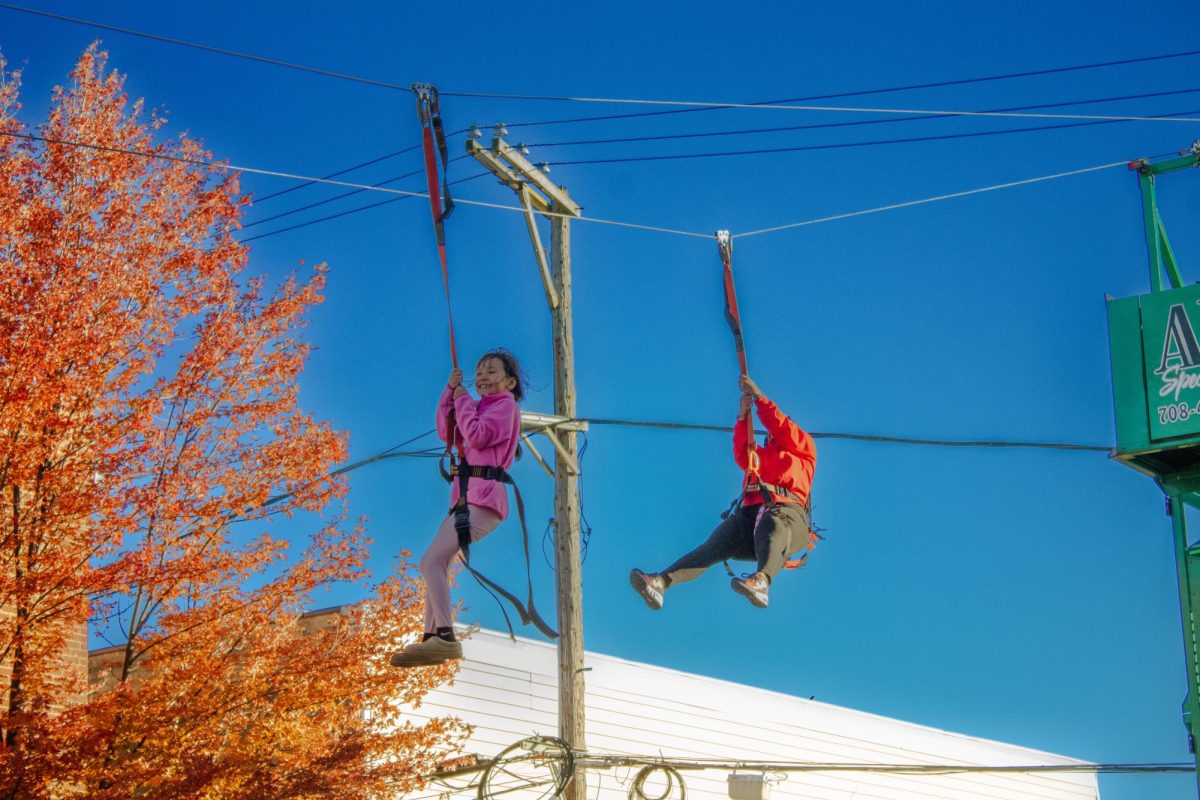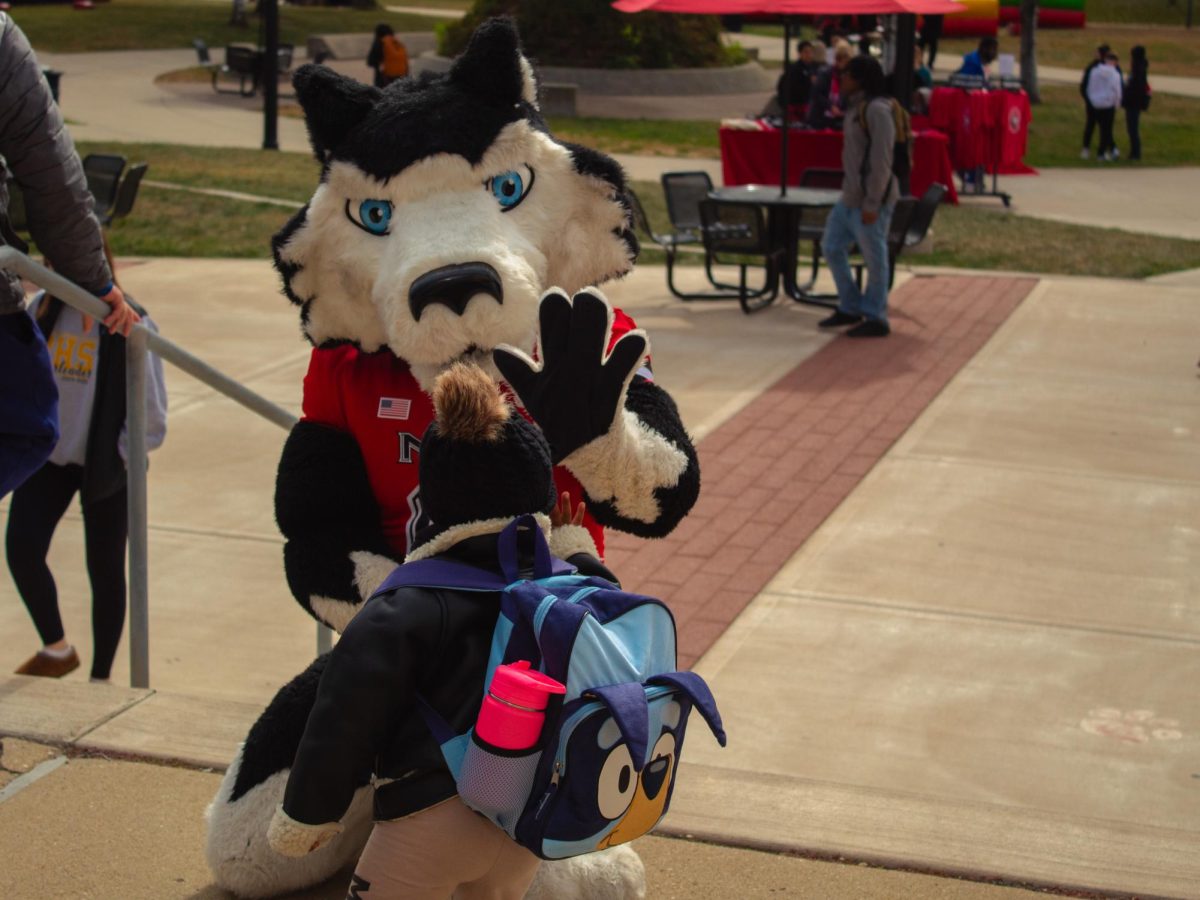The Pick Museum of Anthropology’s new exhibition highlights the processes through which individuals and communities recover after conflict, showing the resilience, strength and determination that emerge in the aftermath of war.
“How We Rebuild,” a photography exhibition, will be open until Dec. 19 in Cole Hall, Room 114.
The photographs on display were created over 12 years by winners and finalists of The Aftermath Project, a nonprofit founded by documentary photographer Sara Terry. The project focuses on capturing the experiences of people rebuilding their lives once hostilities have ended, offering a perspective that goes beyond images of conflict to reveal human stories of healing and reconstruction.
“Definitely some very heavy images,” said Wyatt Smith, a senior general studies major at NIU.
The exhibition is presented in three parts. It begins with photographs from Bosnia that document the early work of The Aftermath Project. Visitors are greeted with images of the Bosnian War, which took place from 1992 to 1995, showing communities affected by the conflict and the efforts to rebuild afterwards.
A mounted panel on one wall reads: “The Aftermath Project’s founding principle is ‘war is only half the story.’”
The second section displays images by American photographers reflecting on historical conflicts connected to the U.S.
Jessica Hines, 2010 finalist, through her photograph series “My Brother’s War,” tells the story of her brother Gary, who fought in the Vietnam War. The series includes works titled “The Remembrance,” and “The Reflection” and “Reconciliation.” One photograph is of a letter written by Gary, dated Nov. 2, 1967, in which he began, “Dear family . . . tomorrow morning I leave for Vietnam.” Another “letter,” dated Nov. 8, 1967, recounts his time in Vietnam.
“I’ve been in Vietnam for about four days now,” the letter reads. “The first two days I spent in a replacement company, then I got my orders, and I was put on a plane and sent to Gui Nhon (pronounced queen yon).”
The final section, titled “World of Aftermaths”, brings together photographs from regions including Northern Ireland, Sierra Leone and Ukraine, providing a multinational lens on post-conflict experiences.
The photograph “Wounds” by Joseph Sywenkyj, a 2022 Aftermath Project Grant winner, shows an injured man leaning on a crutch, facing two outstretched arms at the Kyiv Military Hospital. The gallery documents soldiers who were severely injured during the Euromaidan Revolution of 2014 and Russia’s ongoing war against Ukraine.
A photograph by Adam Patterson, a 2015 finalist, titled “Men and My Daddy,” shows a young boy standing in a neighborhood in Belfast, Northern Ireland. He holds a bag of food in one hand and a snack in the other, gazing off into the distance. Patterson created the series after returning to Northern Ireland in 2010 to document how former paramilitaries and their families were managing life in the years following the Troubles, a period of sectarian conflict that lasted from the late 1960s to 1998.
Throughout the exhibition, visitors encounter mounted panels posing questions, encouraging reflection and engagement with the photographs. One panel asks: “What do you think happened just before and after the photo was taken?”
As a teaching museum, the Pick Museum of Anthropology provides students and faculty opportunities to engage directly with cultural artifacts, contribute to exhibitions and integrate object-based learning into coursework.
Exhibitions such as “How We Rebuild” support these educational goals while also fostering broader awareness of cultural diversity, human resilience and global social challenges.
The exhibition is part of the ExhibitsUSA touring program, managed by Mid-America Arts Alliance with support from the National Endowment for the Arts. ExhibitsUSA coordinated the curation, logistical planning, and shipping of the exhibition, providing a fully prepared package that makes it feasible for the museum to host this multi-site project. Their national network brings fully developed, financially subsidized exhibitions like this one to diverse communities.
Visitors are welcome to stop by from 10 a.m. to 4 p.m. Tuesdays through Saturdays.



